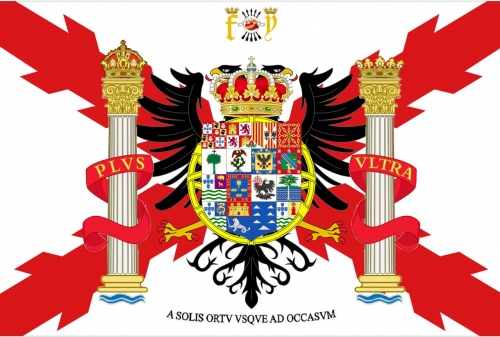
Geopolítica del hispanismo
Sobre el papel de España y la Hispanidad en el mundo globalizado
Ex: http://nodulo.org
Introduccion
La historia de la geopolítica se remonta al geógrafo alemán Friedrich Ratzel (1844-1904) y sus intentos de crear un puente entre las ciencias naturales con las políticas y sociales. Influido por el darwinismo, publicó en 1879 el libro Geografía Política donde interpretaba los datos de la geografía y la antropología a la luz de la selección natural y la evolución.
Discípulo de Ratzel fue el sueco Rudolf Kjellen (1864-1922) que utilizó por primera vez el término “geopolítica”. Profesor de la Universidad de Upsala, publicó en 1916 El Estado como forma de vida en el cual describía al Estado como un organismo partiendo de una biología social y no de una simple mecánica{1}.
Para ambos autores, el Estado, concebido como un organismo, tiene todas las características biológicas. Si un organismo es algo más que una suma de órganos o una suma de células, el Estado es más que “la suma de los ciudadanos”. Analogías parecidas encontramos en Jacob von Uexküll{2}.
Otra figura destacable de la geopolítica es el inglés Halford J. McKinder (1861-1947), creador del concepto de Heartland (corazón de la Tierra), muy utilizado por Dugin. Sin embargo la figura clave en el desarrollo de la geopolítica fue el alemán Karl Haushofer (1869- 1946).
Karl Haushofer
Nació el 27 de agosto de 1869 en Múnich y eligió la carrera militar{3}. En 1890 es ya oficial de artillería en la armada bávara, y se casa con Martha Mayer-Doss, mujer de origen judío, lo que más tarde le va a dar problemas políticos con el régimen nacional-socialista.
En 1904 es ya profesor de la Academia de guerra, y en 1908 es enviado al Japón para organizar allí la armada imperial. De su experiencia japonesa publicará su primer libro en 1913, Dai Nihon (el Gran Japon). Estudia geografía en la universidad de Múnich, donde presentará su tesis doctoral sobre los mares internos del Japón en 1919.
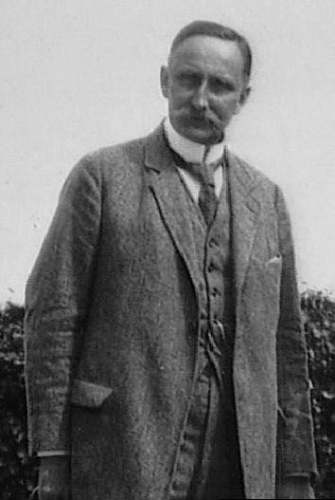 Gran amigo de Rudolf Hess, colaborará con el NSDAP y con el régimen nacional-socialista, pero pronto surgirán diferencias. En 1944 es detenido e internado en Dachau. Su hijo Albretch, que había ocupado cargos importantes en la diplomacia alemana, es asesinado por los nazis. A pesar de todo ello, concluida la II Guerra Mundial, las autoridades de ocupación americanas la retiran su título de profesor honorario y su derecho a una pensión. Junto con su esposa se suicidó el 10 de marzo de 1946.
Gran amigo de Rudolf Hess, colaborará con el NSDAP y con el régimen nacional-socialista, pero pronto surgirán diferencias. En 1944 es detenido e internado en Dachau. Su hijo Albretch, que había ocupado cargos importantes en la diplomacia alemana, es asesinado por los nazis. A pesar de todo ello, concluida la II Guerra Mundial, las autoridades de ocupación americanas la retiran su título de profesor honorario y su derecho a una pensión. Junto con su esposa se suicidó el 10 de marzo de 1946.
Haushofer abogó por la superación de los pequeños nacionalismos y por la construcción de grandes espacios continentales. Trabajó por la colaboración de europeos, rusos y japoneses en la formación de una gran alianza euroasiática, cerrada a la influencia inglesa y americana.
Realizó un importante trabajo teórico sobre las fronteras. Para Haushofer las fronteras son fenómenos biogeográficos, que deben ser pensadas, concebidas y trazadas con un enfoque pluridisciplinar y no meramente jurídico.
Haushofer abogó no solamente con la alianza alemana con Japón, sino por el apoyo activo a los pueblos sometidos al Imperio Británico ( árabes, hindúes) en una alianza contraria al Imperio Talasocrático{4} representado por Inglaterra y, después, por Estados Unidos. Los prejuicios racistas de Hitler y otros dirigentes del NSDAP no vieron con buenos ojos estas propuestas. Hitler estaba obsesionado por conseguir una alianza con Inglaterra, pues consideraba “arios” a los ingleses, mientras que despreciaba a los asiáticos e incluso a los eslavos, a los que consideraba “razas inferiores”.
El Heartland o “Corazón de la Tierra”
El concepto geopolítico de Heartland fue introducido por Mackinder{5}, y ligado a la existencia geográfica de cuencas endorreicas, es decir, grandes cuencas fluviales que desembocan en mares cerrados (Mar Caspio, Mar Negro). Heartland procede del inglés heart (corazón) y land (tierra), siendo quizás "tierra nuclear" o "región cardial" las traducciones castellanas más aproximadas. El Heartland es la suma de una serie de cuencas fluviales contiguas cuyas aguas van a dar a cuerpos acuáticos inaccesibles para la navegación oceánica. Se trata de las cuencas endorreicas de Eurasia Central más la parte de la cuenca del Océano Ártico congelada en la Ruta del Norte con una capa de hielo de entre 1,2 y 2 metros, y por tanto impracticable buena parte del año ―salvo para rompehielos de propulsión atómica (que sólo la Federación Rusa posee) y similares embarcaciones
La regla de oro de Mackinder podría traducirse como "Quien una a Europa con el corazón de la tierra, dominará el corazón de la tierra y por tanto la Tierra". El Heartland carece de un centro neurálgico claro y puede definirse como un gigantesco y robusto cuerpo en busca de un cerebro. Dado que entre el Heartland y Europa no hay barreras geográficas naturales (cadenas montañosas, desiertos, mares, &c.), la cabeza más viable para el Heartland es claramente Europa, seguida a mucha distancia por China, Irán e India.
La marcha de la humanidad europea hacia el corazón de Asia culminó cuando la cultura griega se introdujo en la mismísima Mongolia: hoy el idioma mongol se escribe con caracteres cirílicos, de herencia greco-bizantina, significando que la caída de Constantinopla en realidad proyectó la influencia bizantina mucho más al Este de lo que los emperadores ortodoxos jamás hubieran podido imaginar. Sin embargo, la tarea de Europa no termina aquí, ya que sólo Europa puede acometer la empresa que convierta al Heartland en el potente espacio cerrado profetizado por Mackinder.
Para poder profundizar en el tema, es necesario familiarizarnos con la cosmogonía mackinderiana, que dividía el planeta en varios dominios geopolíticos claramente definidos.
• La Isla Mundial es la unión de Europa, Asia y África, y lo más parecido que hay en las tierras emergidas a Panthalasa u Océano Universal. Dentro de la Isla Mundial se encuentra Eurasia, la suma de Europa y Asia, que es una realidad tanto más separada de África desde la apertura del canal de Suez en 1869, que permitió que el poder marítimo envolviese a ambos continentes.
• El Heartland no precisa ya de introducción. La teoría mackinderiana parte de la base de que el Heartland es una realidad geográfica en el seno de la Isla Mundial, del mismo modo que la Isla Mundial es una realidad geográfica en el seno del Océano Mundial.
• El Rimland, también llamado Creciente Interior o Marginal, es una enorme franja terrestre que rodea al Heartland y que consta de las cuencas oceánicas anexas al mismo. Pentalasia, los Balcanes, Escandinavia, Alemania, Francia, España y la mayor parte de China e India, se encuentran en el Rimland.
• La Creciente Exterior o Insular es un conjunto de dominios ultramarinos periféricos, separados de la Creciente Interior por desiertos, mares y espacios helados. África subsahariana, las Islas Británicas, las Américas, Japón, Taiwán, Indonesia y Australia se encuentran en la Creciente Exterior.
• El Océano Mediterráneo (Midland Ocean) es el Hearlandt del poder marítimo. Mackinder definía el Océano Mediterráneo como la mitad norte del Atlántico más todos los espacios marítimos tributarios (Báltico, Bahía de Hudson, Mediterráneo, Caribe y Golfo de Méjico). Recordemos que las mayores cuencas fluviales del mundo son las que desembocan en el Atlántico —después vienen las del Ártico y sólo en tercer lugar vienen las cuencas del Pacífico.
Obsérvese que estas ideas geopolíticas han servido de guía en la estrategia y política exterior Inglesa. Tanto en Primera como en la Segunda Guerra Mundial la diplomacia británica consiguió impedir una alianza Alemania- Rusia que habría unido Europa con el Heartland. Algunos intelectuales y políticos alemanes, como Ernst Niekisch, dirigente del partido Nacional-Bolchevique trabajaron a favor de esta alianza, y el pacto Molotov-Ribentropp fue un paso en este sentido. Sin embargo los prejuicios racistas de Hitler contra el mundo eslavo actuaron en sentido contrario y le llevaron a la guerra con Rusia, con las consecuencias que todos conocemos.
Civilizaciones de la Tierra y del Mar
La idea de la existencia de civilizaciones Telúricas (o de la Tierra) y Talasocráticas (o del Mar) es muy importante en las ideas geopolíticas de Dugin{6} pero no es original suya. Ya la encontramos en Haushofer y, sobretodo, en Carl Schmitt{7}.
Para Dugin las llamadas civilizaciones de la Tierra se caracterizan por una serie de ítems ideológicos y sociológicos: Conservadurismo, Holismo{8}, Antropología Colectiva y culto a los valores del ascetismo, el honor y la lealtad. Son civilizaciones enraizadas a la tierra y los valores de la tradición y la continuidad. En contraste, en las civilizaciones del Mar predominan los valores individualistas, universalistas y comerciales. El Océano no tiene fronteras y el navegante pierde con facilidad sus raíces. En la antigüedad, la oposición Roma (la Tierra) frente a Cartago (el Mar) es un buen ejemplo de esta dualidad. En la modernidad Inglaterra es un ejemplo prístino de civilización Talasocrática, así como EEUU a partir de un cierto momento de su historia.
Para Dugin{9} Rusia ha sido siempre una civilización de la Tierra. Desde el Rus de Kiev, el Zarato Moscovita, la URSS o la actual Federación Rusa, por encima (o por debajo) de las diferencias políticas, hay un conjunto de rasgos comunes en el transcurso de la historia política rusa. Todo ello ha llevado a Rusia a un enfrentamiento continuo, tanto a nivel ideológico como geopolítico, con las civilizaciones “del Mar”. La Guerra Fria y el actual enfrentamiento de la Rusia de Putin con EEUU y sus aliados son buenas muestras de este enfrentamiento, aunque con motivaciones políticas y propagandísticas distintas.
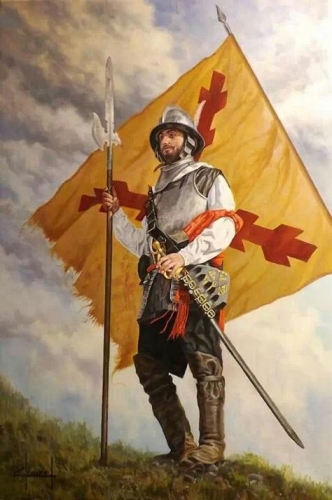
El Imperio Hispánico como Civilización de la Tierra
Desde que Hispania se configura con los Reyes Católicos como unidad imperial hasta el Imperio Europeo de Carlos V, en el que España es pieza principal, el Imperio Hispánico pertenece sin duda alguna a las civilizaciones de la Tierra. Toda la empresa hispanoamericana se concibe como la construcción de una Nueva España, como una aplicación del Catolicismo Político en clave constructora. Hay una evidente coincidencia entre la idea de Carl Schmitt y Dugin de Civilización de la Tierra y la idea de Gustavo Bueno de Imperio constructor.
La empresa española en América no se concibe nunca como una simple operación de saqueo para obtener un botín, sino en la creación de nuevas sociedades políticas, en las que son integrados los indígenas. El hecho material de las construcciones en piedra (Catedrales, Universidades, Hospitales) demuestra que los españoles fueron a Hispanoamérica a quedarse. Nadie construye en piedra si a lo que va es a saquear y obtener un botín.
El reinado de Carlos V reúne en su persona al Imperio Hispánico y al Imperio Austriaco, heredero del Sacro Imperio. La simbiosis entre ambos imperios es una auténtica Civilización de la Tierra en clave de la realización política del Catolicismo.
Frente a este Imperio Constructor o Civilización de la Tierra se yerguen dos formidables adversarios, dos Civilizaciones del Mar, dos Imperios Depredadores: el británico y el holandés. La derrota de la Armada Invencible es la primera señal del declive. Muchos años más tarde, cuando el poder del Mar se ha trasladado a Estados Unidos, la derrota de la escuadra española, mandada por Cervera, frente a la estadounidense en Santiago de Cuba remata la derrota hispánica.
Geopolítica del mundo multipolar
La posibilidad de construcción de un mundo multipolar ha sido magníficamente expuesta por Dugin en su libro del mismo nombre{10}. La geopolítica se concibe como un instrumento de análisis fundamental, más importante incluso que las propias ideologías. Pero Dugin distingue entre una geopolítica “del Mar” y una geopolítica “de la Tierra”{11}. La primera estaría al servicio de la globalización y del mundialismo, que no es más que una extensión mundial del Imperio atlantista anglo-americano como civilización del Mar. El mundialismo, el neoliberalismo, la ideología de género y los “Derechos Humanos” serían los instrumentos ideológicos, mientras que la OTAN seria el brazo militar de este “poder del Mar”, presto a intervenir allí donde alguien osara discutir su hegemonía (Kosovo, Iraq, Siria).
Frente a este poder ningún estado nacional es bastante fuerte para oponerse. La alternativa geopolítica que Dugin propone es la construcción de diversos polos de poder, asociados a civilizaciones, que sean capaces, por un lado de mantener la diversidad cultural en el mundo, y por otro a oponerse a la hegemonía mundialista/estadounidense con el potencial tecnológico, económico y militar suficiente.
El hundimiento de la Unión Soviética pone fin a la división bipolar de la Tierra. Esta división había nacido en Yalta, después de la II Guerra Mundial, cuando la URSS y Estados Unidos se repartieron el mundo. Usando la expresión de Carl Schmitt la bipolaridad fue el tercer nomos de la Tierra, que puso fin en la práctica al segundo nomos, que fue el pactado en Westfalía con el reconocimiento de la soberanía de los Estados. En el mundo bipolar los estados seguían, en teoría, siendo soberanos, pero en la práctica estaban determinados por la adscripción a uno de los bloques, mientras que los intentos de crear un tercer polo de países “no alineados” fracasaron de forma estrepitosa.
El hundimiento del mundo bipolar marca la transición de la Modernidad a la Posmodernidad y la consolidación de Estados Unidos como una hiperpotencia, dispuesta a imponer sus valores, su civilización y su forma de vida en todo el planeta. Su instrumento es la globalización (con todo su arsenal ideológico) y cuenta con la complicidad de las oligárquicas económicas, académicas y culturales desperdigadas por el planeta, que han renegado de sus raíces y están encandiladas con el cosmopolitismo.
Sin embargo, en el seno de la hiperpotencia estadounidense se perfilan dos estrategias distintas para el domino mundial. En una se afirma, de manera indiscutible, el liderazgo mundial de Estados Unidos, basada sobre todo en su potencial económico y militar. Los Busch (padre e hijo) serían un ejemplo de esta estrategia dura. La estrategia blanda insiste en conceptos como “comunidad internacional”, intentando disimular el papel rector de los Estados Unidos y dando más protagonismo a los “aliados y amigos” (Europa, Japón). Insiste más en factores ideológicos y en “valores compartidos”. La presidencia de Obama sería un ejemplo de esta estrategia, en la cual hay una enorme hipocresía, pues recurre, al igual que la otra, a las intervenciones militares para “defender los Derechos Humanos” e “imponer la democracia”: intervención militar en Libia, en Siria, creación y financiación del Estado Islámico para combatir a Assad, &c.
Sin embargo parece que diversos acontecimientos políticos en el mundo parecen ir contra esta tendencia. En primer lugar la subida al poder de Vladimir Putin en Rusia, que pone fin a la era liberal de Boris Yelsit, en la cual se fomentó la desmembración del gigante euroasiático y su rendición frente a Estados Unidos. Con Putin Rusia vuelve a tener vocación de gran potencia y se opone activamente al poder mundial liderado por Estados Unidos. Así, por ejemplo, su intervención en Siria ha sido fundamental para derrotar al Estado Islámico y salvar al régimen de Assad, imprescindible para evitar que la región se convierta en un nuevo caos, como Iraq o Libia.
La victoria de Trump en Estados Unidos es otro factor a tener en cuenta. Por encima de su confusión y su histrionismo, la política de Trump significa una vuelta a la concepción de Estados Unidos como Estado-Nación, y la renuncia a liderar un proyecto mundialista en ninguna de las dos versiones.
Finalmente, la aparición en Europa de movimientos identitarios, que rechazan el mundialismo de la UE, es otro factor a tener en cuenta. Aunque estos movimientos son muy diversos, y, en ocasiones, parece a que tienden a restablecer el Estado-Nación, pueden ser el germen de la construcción de otra Europa distinta a los planes de Bruselas. Allí donde han alcanzado el poder (Italia de Salvini, Hungría de Orban) ya no se inclinan por la retirada de la UE (como el Brexit) sino por una transformación radical de las políticas europeas: proteccionismo, oposición a la inmigración y vuelta a las raíces culturales de Europa.
La multipolaridad no consiste simplemente en un renacimiento de Rusia (que nos devolvería a la bipolaridad), sino en la aparición de diversos polos de poder en la Tierra (mundo árabe, China, India, &c.). Los polos de poder corresponden a las grandes civilizaciones, por lo que la multipolaridad no consiste solamente en un equilibrio de poder, sino en la idea de que ninguna civilización es “superior” a otra, y que todas tienen derecho a desarrollarse según sus dinámicas internas. Es este marco donde debemos definir la geopolítica del Hispanismo.
Polos y Grandes Espacios
Para Dugin{12} un polo debe representar una poderosa formación militar, económica, demográfica, política, geográfica y civilizacional, capaz de oponerse al mundialismo y a la globalización. A su vez el polo puede contener uno a varios Grandes Espacios, asociados a una estructura continental.
Partiendo de esta idea, nosotros proponemos la inclusión del Hispanismo en el polo Hispanoamericano-Europeo-Euroasiático, formado por tres grandes espacios continentales: el Hispanoamericano, el Europeo y el Euroasiático (Ruso). El Hispanismo puede jugar un papel fundamental para la cohesión del espacio Hispanoamericano y Europeo.
La situación actual en estos tres posibles grandes espacios es muy diversa. Vamos a analizar cada una de ellas, y ver el papel que el Hispanismo podría jugar en el futuro.
Rusia y el espacio Eurasiático
No cabe duda que en el momento actual es Rusia la que está más cerca de constituir el Gran Espacio Eurasiático. Las sucesivas victorias políticas de Vladimir Putin son una muestra evidente de la voluntad del pueblo ruso de volver a ser una gran potencia, de intervenir en la política internacional de forma decisiva (como lo ha hecho en Siria), de oponerse al despliegue de la OTAN, de abandonar el comunismo pero sin auto culpabilizarse, asumiéndolo como parte de su historia y de volver a sus raíces culturales. Sin embrago, tal como señala Dugin{13}, no todo está claro y definido en la Rusia actual, y dentro del propio bloque gubernamental hay importantes tendencias liberales y occidentalizantes.
Para Dugin el gran debate es entre los que consideran a Rusia un Estado-Nación (en clave occidentalizante) y los que consideran a Rusia una civilización. La civilización sería el aspecto cultural de lo que políticamente es un Imperio, que se convierte así en el eje organizador del espacio Eurasiático. Rusia, como “Corazón de la Tierra”, es imprescindible para construir el polo Hispanoamericano-Europeo-Eurasiático, y por tanto, la alianza con Rusia es imprescindible para todas aquellas fuerzas políticas que trabajen en este sentido.
Es innegable que la Rusia de Putin ha realizado diversas operaciones geopolíticas que la acreditan ya como una gran potencia, capaz de oponerse con éxito al mundialismo patrocinado por Estados Unidos. La anexión de Crimea, la intervención en Osetia del Sur, y, sobretodo, la intervención en Siria, decisiva para el mantenimiento del Assad y la derrota de Estado Islámico, así lo manifiestan. Otras intervenciones han sido más timoratas, como el apoyo a los rebeldes pro-rusos en Ucrania.
Para Dugin{14} Putin se aproximó a una visión geopolítica clara y sin contradicciones a finales de su periodo presidencial en 2007, en el famoso discurso pronunciado en Munich sobre política de seguridad. En este discurso Putin sometió a crítica el sistema unipolar y describió su visión del papel de Rusia en el mundo contemporáneo. Rechazó la ampliación de la OTAN y su papel de “gendarme”. Además condenó la estrategia económica de los países occidentales en el tercer mundo, que, con la ayuda del Banco Mundial y del Fondo Monetario Internacional, arruinan a las naciones bajo la apariencia de una ayuda económica{15}.
Por otra parte desde la Rusia de Putin se han puesto en marcha diversas iniciativas de integración geopolítica del espacio post-soviético. En el terreno económico hay que citar la Comunidad Económica Euroasiática (Rusia, Kazajstán, Bielorrusia, Tayikistán, Kirguistán), el Espacio Económico Común (Rusia, Kazajstán, Bielorrusia, con invitación a Ucrania) y la Unión Aduanera (Rusia, Kazajstán, Bielorrusia). En el aspecto militar y estratégico hay que citar el Contrato Social sobre Seguridad Colectiva, firmado por Rusia, Kazajstán, Bielorrusia, Tayikistán. Kirguistán y Armenia{16}.
Si en Rusia están ya en camino de construcción del espacio Euroasiático, en Europa y en Hispanoamérica las cosas no están, ni mucho menos, tan avanzadas.
El Espacio Europeo
Aunque pueda parecer paradójico, el principal obstáculo para la construcción de un Gran Espacio Europeo es, precisamente, la Unión Europea. Construida en torno de los ejes ideológicos del neoliberalismo, de la ideología de los Derechos Humanos y del librecambio comercial, la UE pretende extenderse e integrar a estados diversos, algunos absolutamente ajenos a Europa, tanto desde el punto de vista cultural como geográfico. Carente en absoluto de proyecto político, incapaz de plantear una política de defensa propia fuera de la OTAN, auto inculpándose continuamente de las guerras (civiles) que en el pasado asolaron Europa y habiendo renegado absolutamente de las raíces culturales y religiosas de Europa, la UE atraviesa una crisis profunda.
Para muchos europeos la UE es vista como una burocracia sin alma, con unos gestores que nadie ha elegido, que no hace más que decretar normativas restrictivas y políticas de austeridad (que son de miseria) con fidelidad perruna a las directrices del Banco Mundial y del Fondo Monetario Internacional. Erosiona continuamente la soberanía de los estados, sin ser capaz de ofrecer a cambio una auténtica soberanía europea. Además, propicia una suicida política migratoria que, unida a la caída demográfica de los pueblos europeos, puede llevar a una auténtica sustitución de la población.
Todo ello ha provocado la aparición, en muchas naciones europeas, de movimientos populares de repulsa a la UE y a sus políticas migratorias y librecambistas. Estos movimientos, calificados desde el poder de “populistas” y “ultraderechistas”, son muy variados y carecen aún de una estrategia común. En un principio algunos de ellos (como el FN francés) propiciaban la vuelta al Estado-nación, pero poco a poco se va abriendo paso la idea de que tal posición no es viable, pues ningún Estado-nación en solitario puede resistir a la globalización. La llegada al poder de alguno de estos movimientos (Salvini en Italia, Orban en Hungría), la constitución del llamado Grupo de Visegrado (Hungría, Polonia, Chequia y Eslovaquia) que, juntamente con Austria, se han negado a aceptar las cuotas de “refugiados” que la UE les quería imponer o el avance de Alternativa por Alemania está encaminando el proceso hacia la construcción de una “altereuropeidad”.
La posición altereuropea tendría como base una ideología i-liberal: democracia comunitaria pero rechazo al individualismo liberal, rechazo al mundialismo y a la globalización ya afirmación de la identidad común de los pueblos de Europa y de cada una de las patrias que la integran.
El problema es que estamos hablando de estados relativamente periféricos en Europa (el único con peso decisivo es Italia), mientras que los dos estados “centrales” de Europa, Francia y Alemania, siguen en manos de gobiernos neoliberales y mundialistas. Es evidente que para la construcción del Gran Espacio Europeo es imprescindible el eje Paris-Berlín.
El Hispanismo debe considerar a estos movimientos populares como aliados naturales, pero antes hay que aclarar las relaciones de la Hispanidad con Europa.
La Hispanidad y Europa. Las dos almas de Europa
Tradicionalmente se ha considerado que los valores propios de la Hispanidad y eran opuestos a Europa. Si consideramos la Europa de Westfalia, de la Revolución Francesa y del protestantismo esta afirmación es cierta, puesta esta Europa surge de la derrota del Imperio Hispánico. El desenlace de la II Guerra Mundial, con la derrota de las potencias del Eje, de las cuales España era aliada a pesar de su neutralidad, refuerza esta posición. Los aliados vencedores señalan a España como amigo de los vencidos, y le imponen un duro bloqueo comercial. El patriotismo español se afirma siempre como enemigo de esta Europa que nos odia.
Sin embrago existe la posibilidad de otra Europa. Para ello hay que volver la vista hacia la historia. Después de la caída del Imperio Romano y tras unos siglos de confusión, se produce la primera manifestación política Europea, mucho antes del nacimiento de los Estados –nación: el Imperio Carolingio, el Sacro Romano Imperio{17}. Carlomagno reivindica la herencia de Roma (La Traslatio Imperii) fusionada con la herencia cristiana.
Mientras esto ocurría, en la Península Ibérica los incipientes reinos hispano-cristianos luchaban contra los musulmanes. A pesar de la relativa alianza con los francos, los reyes de Asturias, León y Castilla reivindican también la dignidad imperial, pues consideran que sus reinos son el Katechon (el dique, la muralla), que impide a los sarracenos el asalto de Europa.
La dignidad imperial volverá a ser reivindicada por los emperadores germanos, que fundaran el Sacro Imperio Romano-Germánico. La dignidad imperial acabara en la corona del Emperador de Austria. Carlos V fusionará en su corona a los dos Imperios, el Hispánico (ya extendido por Hispanoamérica) y el Austriaco y librará una lucha sin precedentes contra las fuerzas que pretenden disgregar Europa: el protestantismo que rompe la unidad religiosa y los incipientes nacionalismos de los estados-nación auspiciados por las monarquías absolutistas (como la francesa), con el apoyo del Imperio Depredador Británico.
Los sucesores de Carlos V (Felipe II, Felipe III, Felipe IV), aun cuando ya no ostentan la corona imperial austriaca, seguirán esta lucha, que acabará en derrota. La paz de Westafalia marcará el nacimiento de los estados-nación soberanos y por lo tanto en fin de la unidad espiritual y política de Europa.
España, el Imperio Hispánico, no lucharon contra Europa, sino contra un modelo determinado de Europa, que fue el que se impuso y dio lugar a la Modernidad. Ahora, en la posmodernidad, otra Europa es posible, y el Hispanismo debe apostar por ella.
Tal como ha señalado Dugin{18} en Europa existen dos almas: la talasocrática o atlantista, que es liberal y mundialista, representada por la UE y por la OTAN, y que controla actualmente los dos estados centrales de Europa: Francia y Alemania. Pero hay otra alma de Europa, la telúrica e Imperial, la que reivindica su identidad y sus tradiciones, la que se manifiesta en Italia y en el grupo de Visegrado, la que quiere una alianza con Eurasia. El Hispanismo debe apostar por esta otra Europa, pues con ello estará siendo fiel a su pasado y a su historia.
Hispanoamérica
La situación en Hispanoamérica es aún más confusa que en Europa. Desde la proclamación de la “doctrina Monroe”: América para los americanos (del Norte), los Estados Unidos siempre han considerado a las naciones hispanoamericanas como su feudo particular y su colonia. Su intervencionismo en la política interior de los estados hispanoamericanos ha sido continua, a veces de forma ostensible y violenta (golpe de Estado en Chile, en Argentina, intervención militar en Panamá), y otras de forma menos visible pero no menos efectiva (penetración de las sectas evangélicas, decisiva para la victoria de Bolsonaro en Brasil).
La otra cara de la moneda son las corrientes indigenistas, auspiciadas por ciertos sectores de la izquierda, con una visión idealizada de las civilizaciones precolombinas, que rechazan la herencia cultural hispánica y se alimentan de la Leyenda Negra y del mito del genocidio. Ambas posiciones, “derechista” e “izquierdista” tienen en común el rechazo a lo Hispánico.
Hay sin embargo corrientes políticas e ideológicas en Hispanoamérica en que el Hispanismo debe apoyarse: el neoperonismo argentino, representado por el filósofo Alberto Buela{19}, y el crisolismo peruano, representado por el politólogo y activista Israel Lira{20}. Ambas comparten una aceptación entusiasta de la herencia hispana en Hispanoamérica, y una visión continental de la política hispanoamericana.
El neoperonismo rechaza las desviaciones neoliberales de Carlos Menem y socialdemócratas de los Kirchner, y reivindica la herencia justicialista y continentalista del general Perón, lo que hace que sus ideas sean consonantes con el continentalismo europeo y el eurasianismo ruso.
Es misión urgente del Hispanismo volver a tejer lazos con el mundo Hispanoamericano, muy deteriorados por el régimen de 1978, cuya política exterior está marcada por el servilismo hacia la UE y hacia Estados Unidos. En el pasado estos lazos fueron muy estrechos. Recordemos la alianza de la España de Franco con la Argentina de Perón, y, sobretodo, su apoyo a Cuba frente al bloqueo estadounidense. A pesar de ser España aliada de Estados Unidos, y a pesar del abismo ideológico que la separaba de la Cuba de Fidel Castro, sostenido por la URSS, la solidaridad Hispanoamericana estuvo por encima de las diferencias ideológicas, mostrando un ejemplo nítido de lo que es el razonamiento geopolítico por encima de las ideologías.
——
{1} De Benoist, A. (2012) “La Geopolítica” Nihil Obstat. Revista de historia, metapolítica y filosofía, n. 18-19, pp.57-74
{2} Von Uexküll, J. (1945) Ideas para una concepción biológica del mundo (prólogo de José Ortega y Gasset) Buenos Aires- México, Editorial Espasa Calpe Argentina.
{3} Steuckers, R. (2012) “Karl Haushoffer (1869- 1946)“ Nihil Obstat. Revista de historia, metapolítica y filosofía, n. 18-19, pp. 83-90.
{4} Talasocracia significa domino de los mares
{5} En su obra The Geographical Pivot of History publicada en 1904
{6} Dugin, A.G. (2015) La geopolítica de Rusia. De la revolución rusa a Putin. Hipérbola Janus, pp. 7-9.
{7} Schmitt, C. (2001) “Tierra y Mar. Consideraciones sobre la historia universal”, en Orestes Aguilar, H. Carl Schmitt, teólogo de la política. México, Fondo de Cultura Económica.
{8} El todo, el conjunto, es algo más que la suma de las partes.
{9} Obra citada, p. 11.
{10} Dugin, A. (2016) Geopolítica del mundo multipolar. Tarragona, Ediciones Fides.
{11} Dugin, A. (2018) Geopolítica existencial. Conferencias en Argentina. Tarragona, Ediciones Fides.
{12} Obra citada 2016, p. 66.
{13} Dugin, A. (2018) El auge de la Cuarta Teoría Política. La Cuarta Teoría Política, vol. II. Tarragona, Ediciones Fides, pp. 103-107.
{14} Dugin, A. (2015) La geopolítica de Rusia. De la revolución rusa a Putin. Hiperbola Janus, pp. 129-133.
{15} Putin, V.V. (2007) Statement and Discussion at the Munich Conference on Security Policy. http: //archive.kremlin.ru (recurso electrónico)
{16} Dugin, 2015, obra citada, p. 124.
{17} AA. VV. (2018) La Europa Neocarolingia y el eje Eurorruso. Tarragona, Ediciones Fides
{18} Dugin, 2017, obra citada, p. 67.
{19} Dugin, 2018, obra citada
{20} Lira, I. (2016) “Crisolismo y Cuarta Teoría Política. Estudios propedeúticos sobre las bases metapolíticas y epistemológicas para una nueva teoría política peruana” Nihil Obstat. Revista de Historia, Metapolítica y Filosofía. Nº 30, pp. 53- 86.
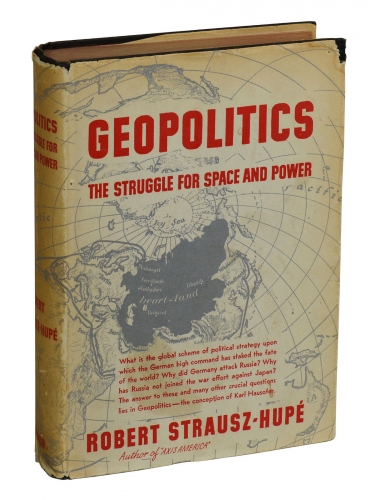




 Gran amigo de Rudolf Hess, colaborará con el NSDAP y con el régimen nacional-socialista, pero pronto surgirán diferencias. En 1944 es detenido e internado en Dachau. Su hijo Albretch, que había ocupado cargos importantes en la diplomacia alemana, es asesinado por los nazis. A pesar de todo ello, concluida la II Guerra Mundial, las autoridades de ocupación americanas la retiran su título de profesor honorario y su derecho a una pensión. Junto con su esposa se suicidó el 10 de marzo de 1946.
Gran amigo de Rudolf Hess, colaborará con el NSDAP y con el régimen nacional-socialista, pero pronto surgirán diferencias. En 1944 es detenido e internado en Dachau. Su hijo Albretch, que había ocupado cargos importantes en la diplomacia alemana, es asesinado por los nazis. A pesar de todo ello, concluida la II Guerra Mundial, las autoridades de ocupación americanas la retiran su título de profesor honorario y su derecho a una pensión. Junto con su esposa se suicidó el 10 de marzo de 1946.

 del.icio.us
del.icio.us
 Digg
Digg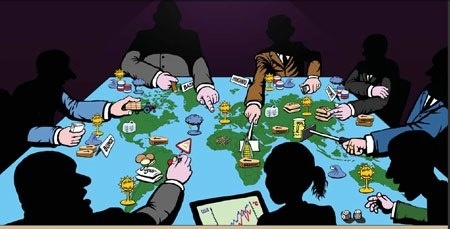
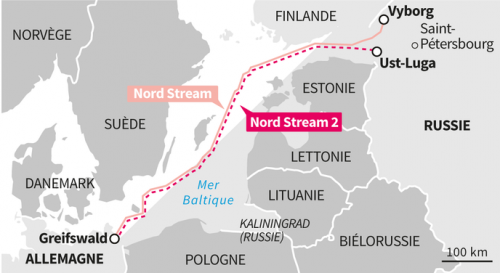
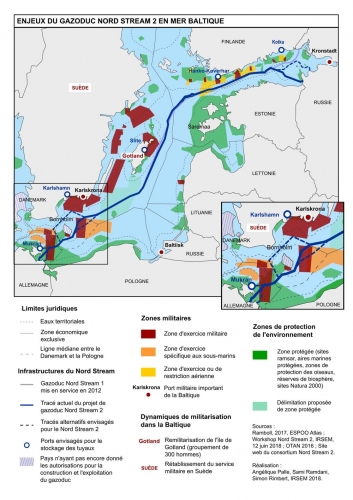
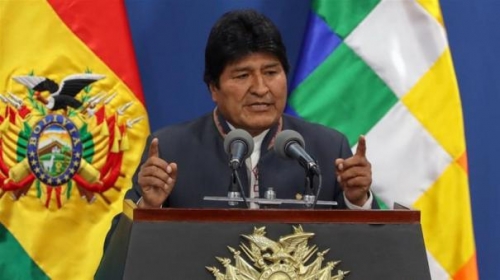
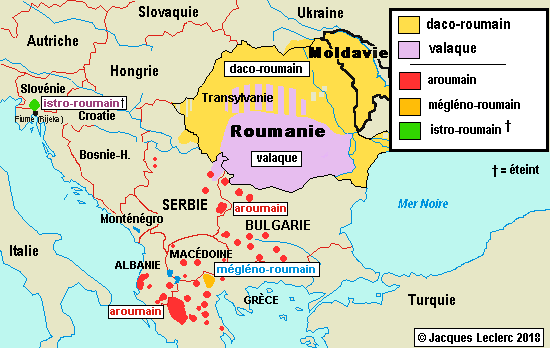
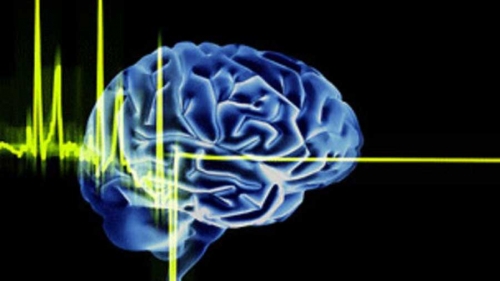
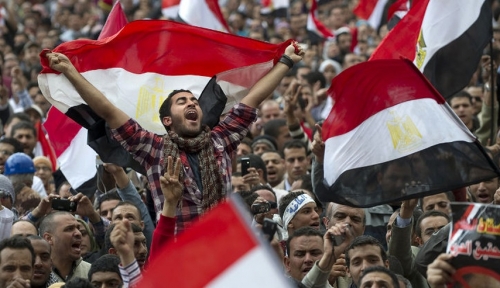
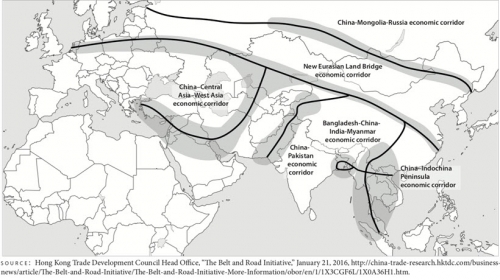
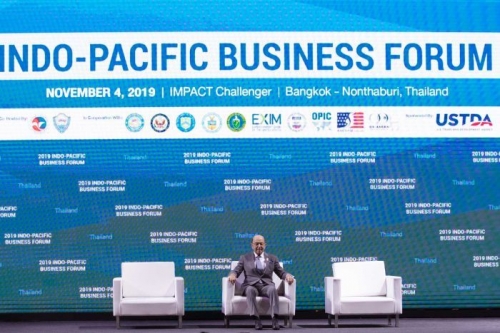

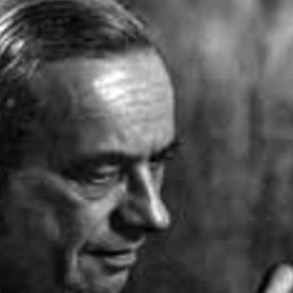
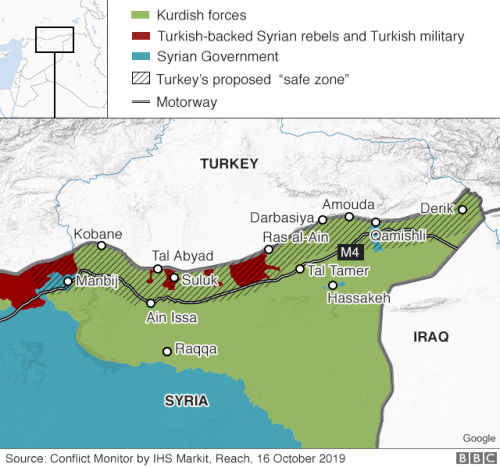
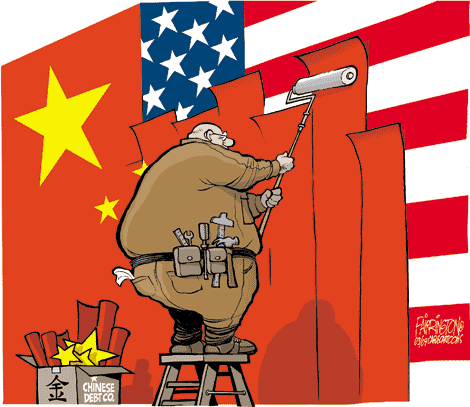

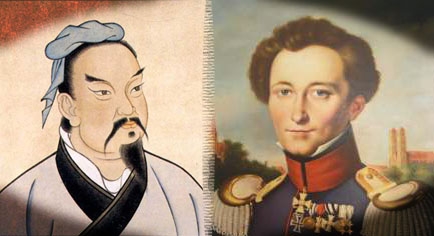
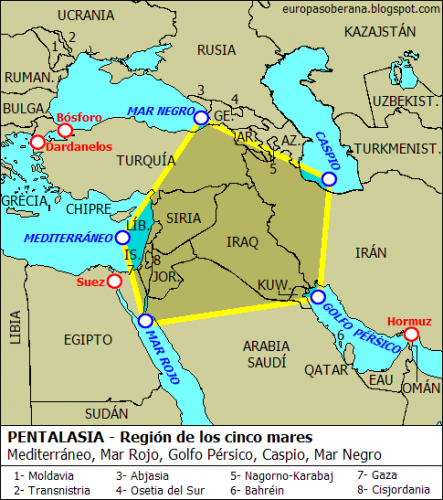
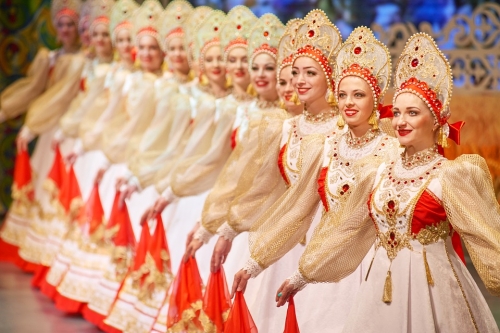
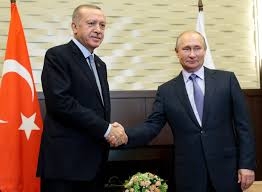
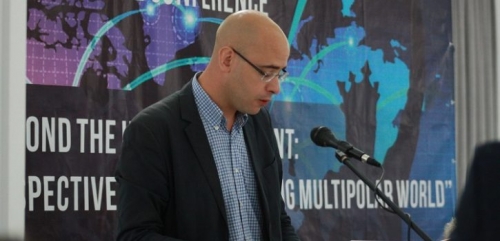
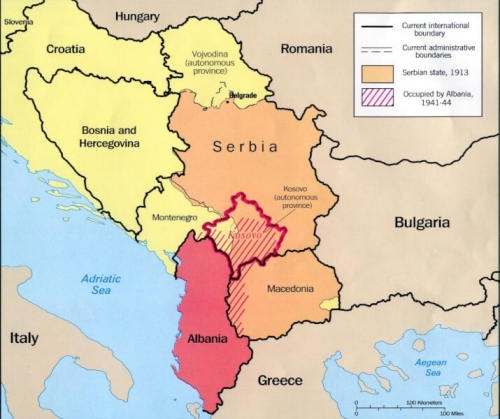
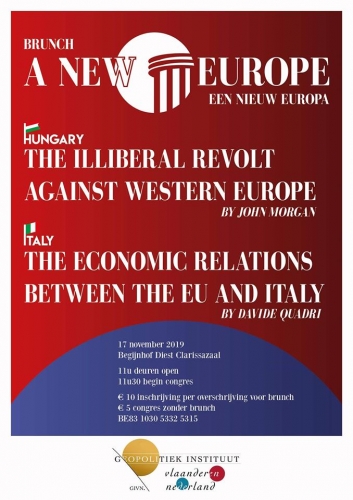
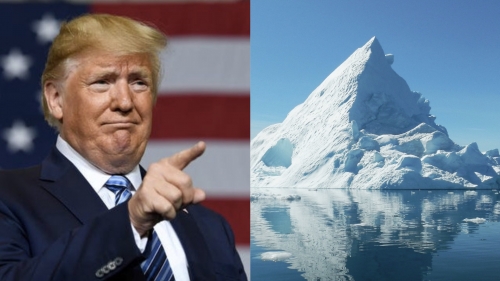
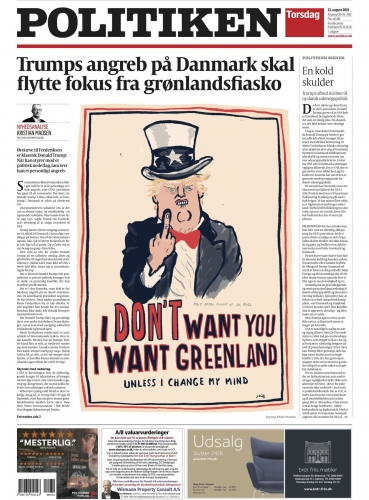
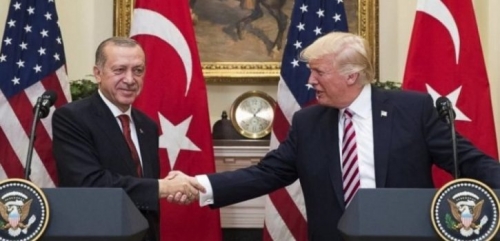
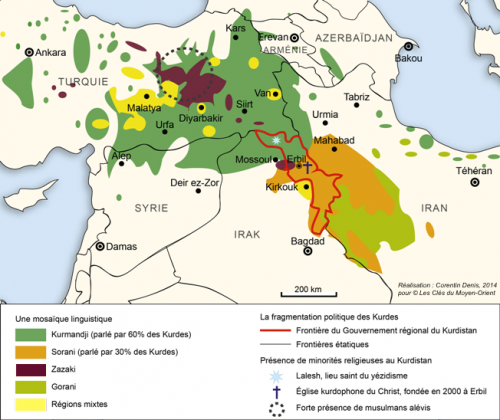
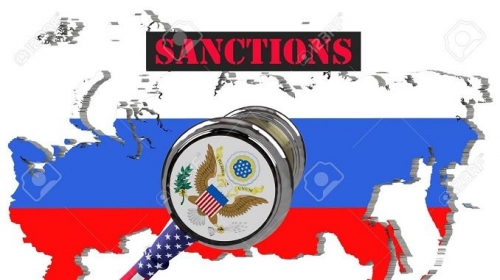
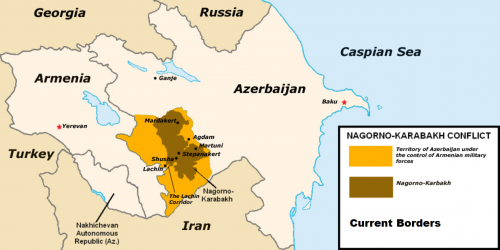
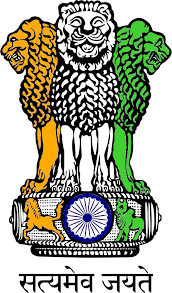
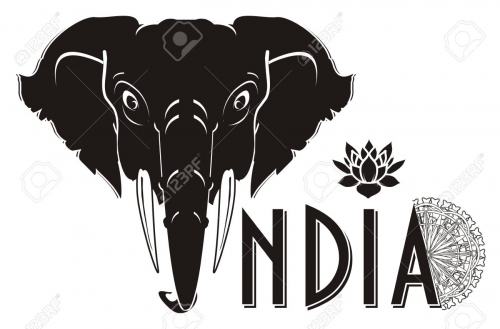
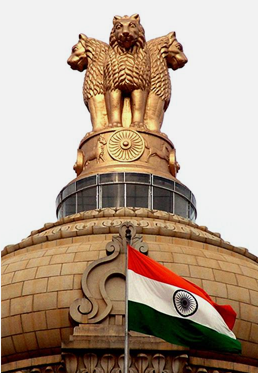 Finally, a word of caution: India has to be extremely careful about uncritically lapping up the “democracy promotion” discourse, which is often aimed at polarising Asia and the world, and denying many states the flexibility of pursuing more complex foreign policies and balance of power strategies (Singh 2018). In the 1950s, Jawaharlal Nehru went to the extent of instructing his diplomats to avoid phrases such as the “free world,” “iron curtain,” or any politically-charged binary that could let it appear that India was parroting Western Cold War rhetoric that potentially positioned it at a disadvantage vis-à-vis other major powers. Modi’s June 2018 speech at the Shangri- La Dialogue in Singapore echoed this approach (MEA 2018). Rejecting the idea that India has a singular identity that then must automatically place it in one coalition or bloc, the Prime Minister spoke of a multitude of groups and partners where the common link was not democracy or shared domestic political systems, but converging material interests or shared ideas and norms of the world order or overlapping concepts of security.
Finally, a word of caution: India has to be extremely careful about uncritically lapping up the “democracy promotion” discourse, which is often aimed at polarising Asia and the world, and denying many states the flexibility of pursuing more complex foreign policies and balance of power strategies (Singh 2018). In the 1950s, Jawaharlal Nehru went to the extent of instructing his diplomats to avoid phrases such as the “free world,” “iron curtain,” or any politically-charged binary that could let it appear that India was parroting Western Cold War rhetoric that potentially positioned it at a disadvantage vis-à-vis other major powers. Modi’s June 2018 speech at the Shangri- La Dialogue in Singapore echoed this approach (MEA 2018). Rejecting the idea that India has a singular identity that then must automatically place it in one coalition or bloc, the Prime Minister spoke of a multitude of groups and partners where the common link was not democracy or shared domestic political systems, but converging material interests or shared ideas and norms of the world order or overlapping concepts of security.